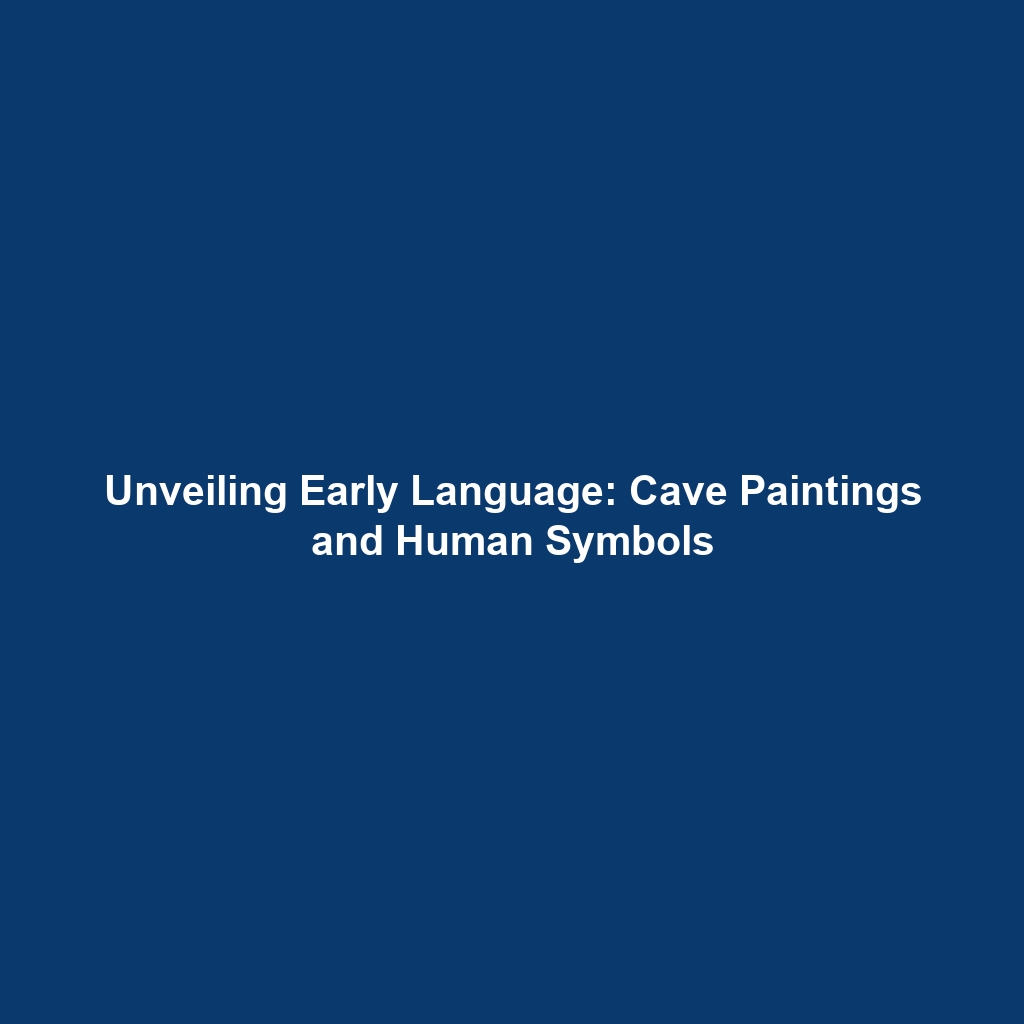Development of Language and Symbolic Thought: Artifacts from Early Homo Sapiens
Introduction
The development of language and symbolic thought represents a critical milestone in the evolutionary journey of early Homo sapiens. Through the examination of artifacts such as cave paintings, carvings, and symbolic objects, researchers gain insight into the cognitive abilities and cultural expressions of our ancestors. This article delves into these significant artifacts, highlighting their importance in understanding human evolution and the emergence of complex communication systems. By exploring these early expressions of thought, we can better comprehend our own cultural and linguistic evolution.
Key Concepts
The Emergence of Symbolic Thought
Symbolic thought is characterized by the ability to use symbols to represent objects or concepts. Key artifacts from early Homo sapiens emphasize this cognitive leap:
- Cave Paintings: These vivid depictions found in various locations, such as Lascaux in France, suggest advanced visual representation capabilities.
- Carvings: Portable art like the Venus figurines showcases the ability to convey meaning through shape and form, implying social and ritualistic significance.
- Symbolic Objects: Items such as the abalone shell beads indicate early forms of personal adornment and social identity.
Relation to Human Evolution
These artifacts reveal not only artistic expression but also the burgeoning social structures among early humans. They signify a transition from mere survival to complex social interactions and cultural identity, all core elements of human evolution.
Applications and Real-World Uses
The study of these early artifacts has profound implications for various fields:
- Archaeology: Understanding the cultural context of human evolution enhances archaeological methodologies.
- Cognitive Science: Insights into early language development contribute to theories about modern cognitive processes.
- History and Anthropology: Utilizing artifacts to trace human migration patterns and social behavior informs contemporary cultural studies.
Current Challenges
Despite the wealth of information these artifacts provide, researchers face several challenges:
- Preservation Issues: Many artifacts are vulnerable to environmental damage and human interventions.
- Interpretation Bias: Cultural context can be misinterpreted, leading to skewed insights into early human life.
- Limited Access: Ongoing excavation and conservation restrict the availability of some sites for study.
Future Research and Innovations
Future research aims to leverage advanced technologies to further analyze these artifacts:
- 3D Imaging: Allows for detailed studies of artifact shapes without damaging the originals.
- DNA Analysis: Could provide insights into the biological makeup of early human populations associated with these artifacts.
- Artificial Intelligence: AI techniques may improve the interpretation of art styles and their meanings within social contexts.
Conclusion
The exploration of language development and symbolic thought through early artifacts is integral in understanding the complex narrative of human evolution. As new technologies emerge and research progresses, our comprehension of these significant cultural expressions will undoubtedly evolve. For those interested in delving deeper into this fascinating topic, consider exploring additional resources on the evolution of cognitive abilities or the significance of early art forms.
